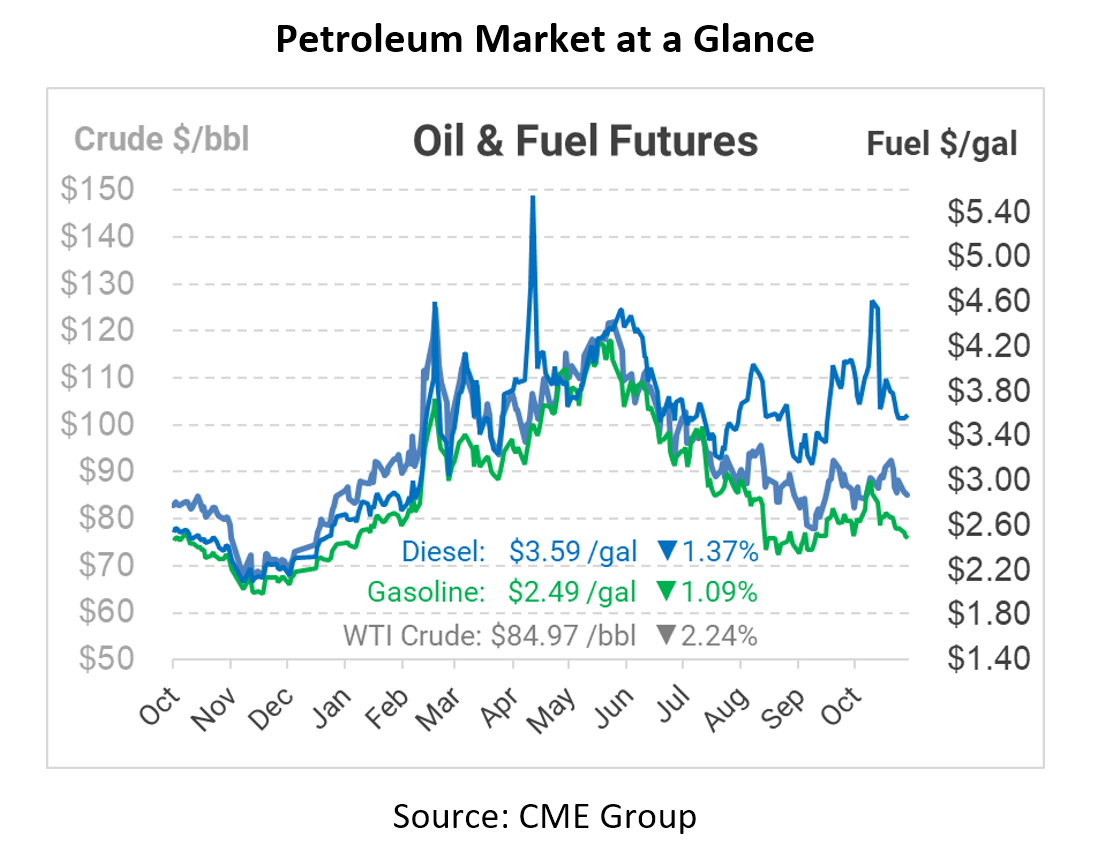
What Is It – PADD 2
You’ve heard about the PADDs. You’ve even heard about PADD 1 on the East Coast, with all its nuances and complexity. Now, it’s time to learn about PADD 2, a market entirely different from the other PADDs. This is the story of a rising star among fuel producers – one with its own challenges and triumphs. Let’s dive in and learn what makes PADD 2, the Midwest, tick and flow.
What is PADD 2?
PADD 2 Midwest is made up of 15 states. Although the EIA sometimes shows it divided into the Eastern, Southern, and Northern Midwest, it does not divide the region into sub-PADDs for reporting purposes like it does on the East Coast.
Because the region is entirely landlocked (unless you count the Great Lakes), it is tightly interconnected with other regions for supply. Product flows daily between its bordering regions including PADD 4 to the West, PADD 3 to the South, and PADD 1 to the East.
PADD 2 Quck Stats
Total Fuel Consumption: 5 MMbpd (2022)
Gasoline Consumption: 2.6 MMbpd (2022)
Diesel Consumption: 1.2 MMbpd (2022)
Refinery Net Production: 4.6 MMbpd (2022)
Total Number of Refineries: 25 (2022)
What Makes PADD 2 Unique?
PADD 2 boasts the highest concentration of refined fuel pipelines of any region, spread across a vast geography. Many pipelines transport fuel between refining markets, as well as bringing fuel in and out of the PADD from other regions. PADD 2 imports fuel from the Gulf states, and exports some to PADD 2.
The region is entirely land-locked, yet still has refineries depending on barge shipments from the Mississippi river. Because the region is landlocked, it doesn’t face the same volatility as the East Coast during severe supply chain disruptions – it doesn’t have access to compete with other major consuming areas like Europe.
Only two PADDs – PADD 2 and PADD 3 – have seen their refining capacity grow over the past few decades. PADD 2 benefitted first from its access to cheap Bakken crude from the Dakotas, though Bakken crude has declined in prominence. The region also sits in close proximity to Canada, providing access to cheap WCS crude oil. Cheap input costs mean lower fuel costs for consumers, so PADD 2 fuel buyers may benefit from lower fuel costs.
Although fuels refined in PADD 2 tend to stay in the US, that doesn’t mean the region is without volatility. As the agricultural hub of the US, PADD 2 sees a robust planting and harvest season each year, with the latter often causing regional diesel prices to rise 10-20 cents (though some years, that’s been more like 30-50 cents).
Let’s Meet the PADD
The eastern portion of PADD 2 is a tightly linked group of refiners and pipelines, with many large refiners around the Chicago area. Other refiners are located near rivers, and ship their fuel to population centers by barge rather than by pipeline.
PADD 2 refiners have the advantage of cheap Canadian crude. Depending on the spread between Canadian crude and US WTI crude, PADD 2 refined fuels could be significantly cheaper than those in other regions. For that reason, PADD 2 refiners are constantly looking for new ways to export their fuel to the East Coast, which has less supply optionality. A few years ago, this manifested in converting the Laurel Pipeline into a bi-directional pipeline, allowing more product to push eastward into Pennsylvania.
To the south, Tennessee is split in half. The western part of the state receives fuel from PADD 2 refineries, but the eastern half is supplied by spur lines from PADD 1’s Colonial Pipeline. This dynamic creates some regional arbitrage opportunities, as Kentucky and Tennessee can see vastly different fuel prices within a few hours drive.
In the Southern portion of PADD 2, products are closely linked to the Gulf Coast. Cushing, Oklahoma is home to the US’s largest hub of crude oil storage and is also the delivery point for WTI crude. That means that refineries in Oklahoma are more likely to use Texas crude, rather than Canadian crude. For the states in between, there’s a constant battle between Canadian-backed Chicago region fuels and Texas-backed Gulf Coast/Oklahoma fuels.
In the northern parts of PADD 2, refineries and pipelines thin out a bit – as does the population. A few refiners in the Dakotas process the local Bakken crude to support local demand, but refineries tend to be much smaller than the behemoths to the south and east.
Minnesota is unique in its requirement of B20, or diesel with 20% biodiesel, during the summer. Given proximity to agriculture and biodiesel producers, Minnesota’s B20 mandate helps drive demand for US-made renewable fuels. In the rest of the country, B20 is available but not a mandate.
Of course, a quick look at a map will tell you that this portion of PADD 2 is located far to the north. During the winter, this part of PADD 2 becomes frigid, with cold air pushing down from Canada. Sub-zero temperatures are not uncommon. For diesel consumers, both diesel winter additives and kerosene are essential components of diesel purchasing programs.
This article is part of Daily Market News & Insights
Tagged: PADD 2
MARKET CONDITION REPORT - DISCLAIMER
The information contained herein is derived from sources believed to be reliable; however, this information is not guaranteed as to its accuracy or completeness. Furthermore, no responsibility is assumed for use of this material and no express or implied warranties or guarantees are made. This material and any view or comment expressed herein are provided for informational purposes only and should not be construed in any way as an inducement or recommendation to buy or sell products, commodity futures or options contracts.










